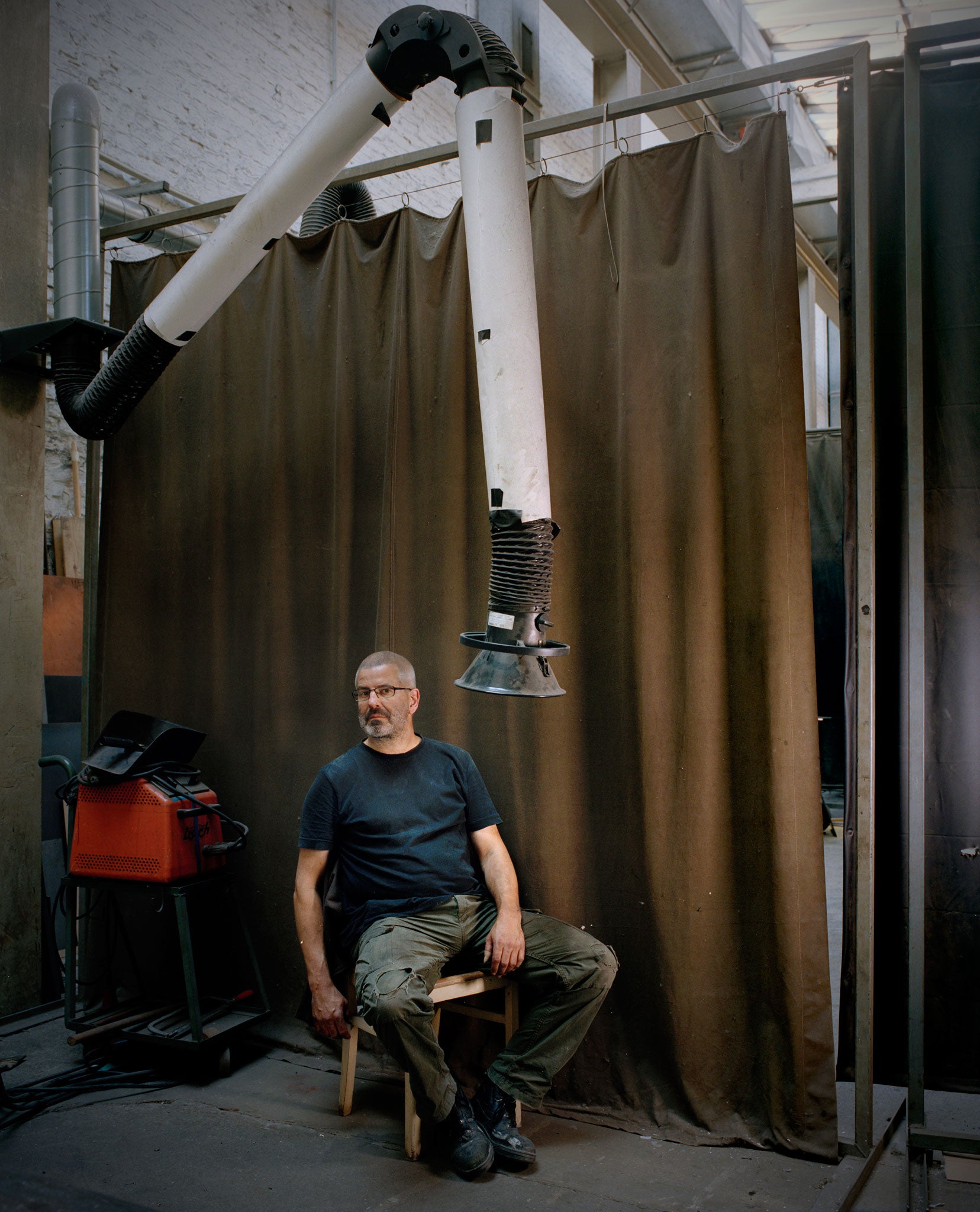Thomas Rentmeister, artist: "I make music here but often go out to have my work made elsewhere"
Karen Wright meets the artist in his studio in Weissensee, an area of east Berlin

Your support helps us to tell the story
From reproductive rights to climate change to Big Tech, The Independent is on the ground when the story is developing. Whether it's investigating the financials of Elon Musk's pro-Trump PAC or producing our latest documentary, 'The A Word', which shines a light on the American women fighting for reproductive rights, we know how important it is to parse out the facts from the messaging.
At such a critical moment in US history, we need reporters on the ground. Your donation allows us to keep sending journalists to speak to both sides of the story.
The Independent is trusted by Americans across the entire political spectrum. And unlike many other quality news outlets, we choose not to lock Americans out of our reporting and analysis with paywalls. We believe quality journalism should be available to everyone, paid for by those who can afford it.
Your support makes all the difference.Thomas Rentmeister's studio is in Weissensee, an area of east Berlin that is rapidly becoming home to a generation of artists who have been priced out of the centre of town. He shares the space, part of a former film studio, with his artist girlfriend, Birte Bosse. They are living in the studio until they can find somewhere else to buy, admitting that it is becoming increasingly difficult. "Gentrification is like the waves with the tide coming in. You are standing on a beach with increasingly wet feet."
Rentmeister arrived in Berlin in 2004 via Cologne after studying in Düsseldorf. He teaches in the nearby Hochschule für Bildende Künste (HBK) Braunschweig, and says that teaching gives him not only a stable income but also ideas and energy. And today, a hangover – he was celebrating last night with his students and colleagues, DJing at what sounds like a grand faculty party.
He enjoys living and working in the studio, he says, and proudly shows off his neat storage area before making me powerful coffee in the small corner kitchen. "I like my work, it's almost like a hobby. I make music here but often go out to have my work made elsewhere."
In the past his sculptures were often composed of unusual materials: a floor of potato chips; a wall smeared with Nutella; a picture composed of shelves from discarded fridges. In the studio there is a children's toy trolley as well as a dismembered chair. It is knowing what to do with these disparate ingredients and how to transform them into sculptures, often in an "ugly aesthetic", that is this artist's particular magic.
He shows me an image of a permanent sculpture composed of old fridges in the garden of the Berlin gallery Haus in Waldsee. To many it might look like fly-tipping, a blight in the museum's orderly, manicured gardens. Rentmeister's explanation is that "outdoor sculptures often don't work because they decay. Here the decay is part of the work."
Much of his work draws on his life. Born in 1964 in northwestern Germany, he grew up in a small village. A "typical" work is composed of a cushion, as remembered from his mother's house, then replicated by a local upholsterer then cast in iron and perched on a duvet (representing his mother's dowry, composed of white sheets, that she never used) with a facsimile rake in rusty iron. "It's a heavy heritage," he sighs, his genial face looking momentarily sad.
Thomas Rentmeister's work can be seen in the Museum Boijmans van Beuningen, Rotterdam
Join our commenting forum
Join thought-provoking conversations, follow other Independent readers and see their replies
Comments